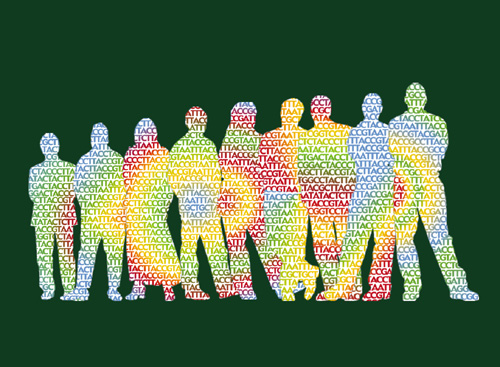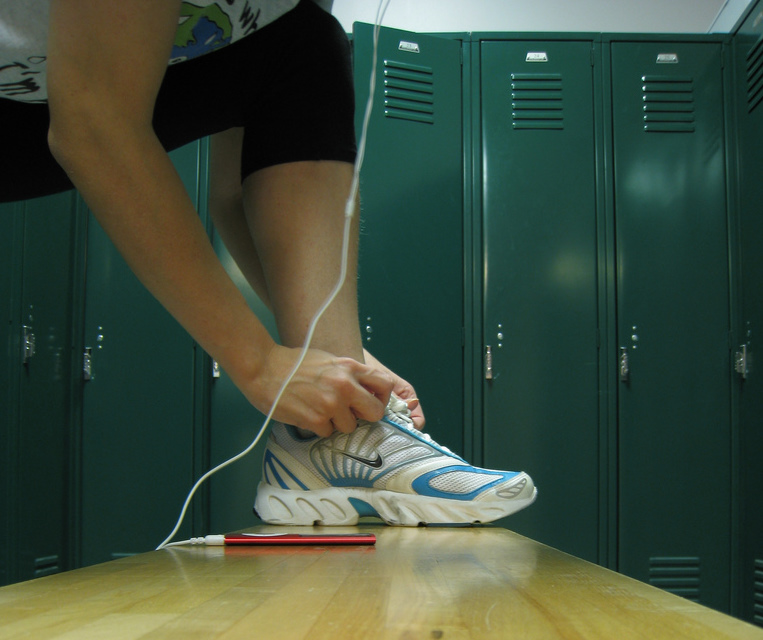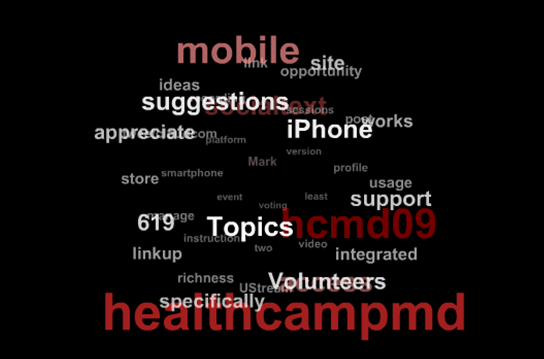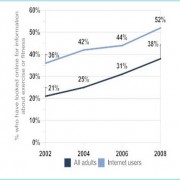mHealth Summit 2010: A context check list

“Involve end users at the very beginning.” – Walter Curioso, MD, MPH, PhDc., Universidad Peruana Cayetano Heredia and University of Washington
At the second mHealth Summit, over 2,500 individuals from almost 50 countries converged in Washington, DC to discuss the mHealth (mobile health) ecosystem. Several themes surfaced, including scalability, profitability, sustainability, and data accessibility. But one theme continually stood out: context.
Programs that are successful have several key features in common that are centered around user context. Conversely, interventions, apps, and programs that seem amazing on paper but don’t work, don’t get the context thing.
“It’s very easy to fool yourself that something works.” – Bill Gates, Bill & Melinda Gates Foundation
Based on the wisdom of the speakers and attendees at the mHealth Summit, as well as at several recent mHealth-related meetings, here is a handy-dandy context check list. Depending on your perspective, your ‘user’ may be a customer, client, or consumer, and may be a parent, patient, doctor, nurse, or community health worker.
A context check list of 15 key questions you should ask:
1. For whom are you designing?
What are their values? Their wants and needs? Their fears? What empowers them?
2. What communities are your users part of? How do these communities influence their decisions, behaviors, values and beliefs?
Your users may be part of a community where they send and receive 100 text messages a day, or they may be part of a community that does not text. They may be part of community that relies on images and stories to communicate information. They may be part of a community where talking about sex is taboo.
3. Are you willing to let your users teach you what you really meant to do and how to do it?
Are you willing to be wrong? Are you willing to be wrong often? A key to success is to fail, and to fail frequently and quickly. Embrace failure and iterate – often and fast.
4. Are you correctly measuring how your users are using your program?
Are you collecting the right metrics that will allow you to iterate?
5. What is the literacy level of your users? What is their health literacy?
“SMS does no good if people can’t read.” – Nils Daulaire, MD, MPH, Director, Dept. of Health and Human Services Office of Global Health
Literacy involves reading, writing, speaking, doing basic math, and listening. Research shows that health materials consistently exceed the reading ability of the intended audiences. “We have the audacity to say people have low literacy skills when our material is poorly designed.” – Rima E. Rudd, ScdD, MSPH, in Improving Health Literacy for Older Adults, Expert Panel Report 2009 (CDC) (PDF)
Literacy rates vary by country, by sex, and by age. They vary by county within a state.
– State and county estimates of low literacy (U.S. Dept of Education)
– Adult literacy rates by country, Human Development Report 2009, United Nations Development Programme (see appendix H) (PDF)
6. Do you know what languages your users speak?
There’s English and Spanish and Chinese. And then there are the specialized languages. Think teen speak vs. senior speak.
Texting abbreviations for the elderly, courtesy of the Car Talk guys:
IMHO: Is My Hearing-aid On?
ROFL… CGU: Rolling On The Floor Laughing… And Can’t Get Up
FWIW: Forgot Where I Was
7. What is it you really want your users to understand or do?
Do they want to do it? What is their stage of readiness?
8. Do your users trust you?
(Have you asked them?)
9. Are you basing your mobile strategy on computer usage patterns or on mobile usage patterns?
The most popular search terms on the main MedlinePlus website (not including the mobile version) include words such as depression, diabetes, hypertension, and asthma (see search word cloud).
The most popular search terms from mobile platforms tend to be ‘incident driven.’ Think pregnancy, herpes, and STDs.
10. Do you know what incentivizes your users?
Is it a colorful flower on a screen saver, is it connecting with others, or is it cold hard cash?
11. Do you know the health status of your users?
Do your users have (or treat) a single disease or multiple conditions? If you are developing a program for a specific disease or condition, will it function in a silo? Should it?
One third of U.S. adults report living with at least one of five chronic conditions (high blood pressure, lung conditions, heart conditions, diabetes, and cancer), and 13% say they have two or more conditions, according to the Pew Internet report on Chronic Disease and the Internet.
Rethink scalability. It’s not just going from 10 users to 10,000. It’s enabling your user to go from managing one health concern to managing three, within a single program.
12. What disabilities do your users have?
Can your users hear a conversation, do their hands tremble, are they color blind, do they have impairments in cognitive function, do their fingers swell, do they use reading glasses, can they be understood when they speak?
About 49 million Americans have a disability, according to the U.S. Census Bureau.
13. Do your users have access to health care and health information?
Are your users isolated? Will you be functioning as their health lifeline? Do they have access to information and facilities? If you provide them will actionable information, will they be able to do it?
14. Are you providing something that your users need to know or do, or that would be nice for them to know or do?
Are you trying to get your users to understand the difference?
Two word example: Medication adherence.
15. Are you engaging and empowering your users?
Are your users able to answer the question, “What’s in it for me?”
“It’s about the users.” – David Gustafson, PhD, Director, Center for Health Enhancement Systems Studies, University of Wisconsin, Madison
Examples of programs that work because they understand the context of their users
A few of the many mHealth Summit commentaries worth reading
- Bill Gates, @billgates, Cell Phone Science
- Tara Cousineau, Ph.D., @taracousphd, Bodimojo, Mobile Health and Teenagers
- Brannon Cullum, @brannonc, @aym, Movements.org blog, Recapping day two of the mhealth summit
- Brian Dolan, @mobilehealth, Mobihealthnews, Round-up: Reactions to the mHealth Summit
- Global Health Blog, @IntraHealth, mHealth: the Possibilities of the Personal
- John Moore, @john_chilmark, Chilmark Research, mHealth: Is it a Market?
- Elisheba Muturi, @ShebaMuturi, Social Health Matters, 2010 mHealth Summit: Show me the evidence
- mHealth Journal, @mhealthjournal, 40 video tech demos of mHealth devices, apps & software online
- Al Shar, @pioneerrwjf, Pioneering Ideas (RWJF), Time to Accelerate Innovation: Takeaways from this Year’s mHealth Summit
- Alex Bornkessel, @socialbttrfly, guest post on Pulse+Signal, In Review: The mHealth Attendee Gaining in Notoriety
Related posts
- The mHealth Summit: Local & Global Converge (Coverage of the 2009 Summit and World Bank Day)
- mHealth: Health where you live, work, and play
- Utilizing mobile technology and new media to encourage mobile lifestyles
- Kids and media use: Letting their fingers do the walking?
Photo credit: BlackMagic by John J. Jarvis on Flickr










Trackbacks & Pingbacks
[…] mHealth Summit 2010: A context check list […]
[…] mHealth Summit 2010: A context check list […]
[…] mHealth Summit 2010: A context check list […]
[…] mHealth Summit 2010: A context check list […]
[…] five ‘Get’ the context angle. They understand their specific audience’s needs, wants, nightmares, and dreams. As a result, […]
[…] be, either. When it comes to health applications, it’s especially important to pause and consider user context. To be successful, e-textile garments will need […]
[…] mHealth Summit 2010: A context check list […]
[…] mHealth Summit 2010: A context check list […]
Leave a Reply
Want to join the discussion?Feel free to contribute!